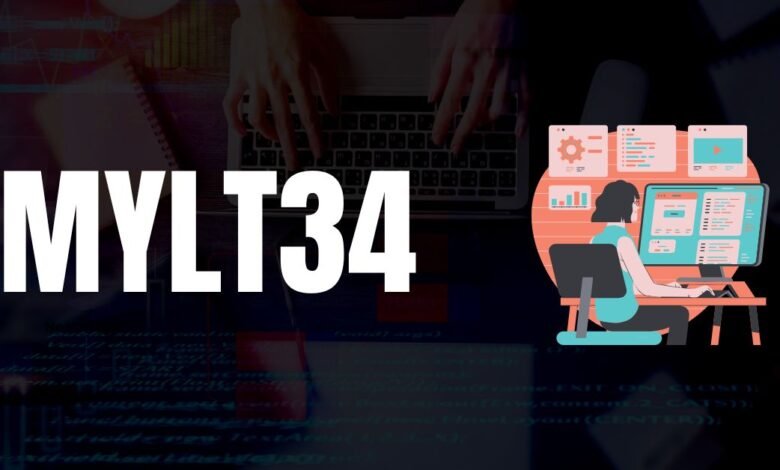Mylt34: Unveiling the Code Behind Modern Digital Systems

The keyword mylt34 may seem like a simple string of characters, but in the context of modern digital systems, it often represents a unique identifier, a version code, or a part of a larger technical framework. In many advanced industries today—ranging from logistics and automation to software development and hardware manufacturing—alphanumeric codes like mylt34 serve crucial purposes. They contribute to the organization, tracking, and reliability of vast amounts of data and products. Understanding mylt34, especially in systems where accuracy and traceability are vital, gives insight into how modern infrastructure stays connected and functional.
The Growing Relevance of mylt34 in Industry
As industries move toward digitization, codes like mylt34 become increasingly valuable. In manufacturing or supply chain environments, such codes might identify specific components or versions of machinery parts. In software systems, mylt34 could be a reference to a data set, a model configuration, or a release cycle in a software update. In all these uses, one thing remains constant—mylt34 serves as a point of reference that ensures everything operates as expected. These identifiers help industries track progress, identify errors, and manage workflows with greater efficiency, ultimately driving operational excellence.
The Function of mylt34 in Digital Databases
One of the most important places where mylt34 plays a role is in digital databases. In environments that manage vast quantities of data, using unique identifiers is essential to prevent duplication, enable faster searches, and allow for easy integration with other systems. mylt34 may act as a primary key or unique reference in relational databases or cloud-based storage systems. Its value lies not in its face meaning but in how it is programmed and applied within digital systems. It ensures that records are distinct, secure, and easily retrievable when needed for analysis, auditing, or operational tasks.
mylt34 in Product Identification and Tracking
In product lifecycle management, mylt34 can signify a particular batch, model, or version. This allows manufacturers to trace each product through its development, shipping, and post-sale support processes. For example, if an issue is reported with a device, referencing myl’t34 helps pinpoint its origin and production specifics. This facilitates faster diagnostics and repair or recall processes if necessary. In retail and logistics, barcode systems or RFID tags often embed such codes to maintain accuracy during inventory tracking and shipments, ensuring the right products reach the right destinations at the right time.
Integration of mylt34 in Software Development
Software developers regularly encounter identifiers like myl’t34 when managing configuration files, building APIs, or referencing models. These codes become a part of naming conventions that dictate how systems interact with one another. In backend programming, a value like myl’t34 might determine which user configuration is applied or what data model a machine learning engine should reference. In CI/CD pipelines, developers assign such codes to manage different builds or versions. This guarantees consistency and prevents human error when deploying updates or performing rollbacks in live environments.
How mylt34 Supports System Security
Security is a major concern in today’s digital landscape, and identifiers like myl’t34 contribute to safeguarding system integrity. By assigning such codes to device firmware, network hardware, or access credentials, organizations can track authorized components and immediately identify anomalies. If an unauthorized device attempts to connect using a spoofed or invalid identifier, security systems can flag the activity for review. This improves the ability to enforce cybersecurity protocols, monitor compliance, and avoid breaches that might result from outdated or unverified elements within a connected infrastructure.
The Role of mylt34 in Quality Assurance
In quality assurance practices, the presence of specific identifiers like mylt34 allows teams to document test results accurately. When a product or system is tested, referencing myl’t34 ensures that the correct version or configuration is being evaluated. This is especially important in regulated industries such as aerospace, healthcare, or automotive manufacturing, where test results must be tied to precise models. Tracking issues, improvements, and regression outcomes become simpler when every test is anchored to a verifiable reference. It ensures accountability and repeatability in testing environments.
mylt34 and Its Impact on Logistics Management
Within logistics and supply chain systems, myl’t34 might represent a shipping label code, warehouse bin identifier, or batch number. These uses enable businesses to trace the movement of items from suppliers to distribution centers and finally to end users. Using such identifiers improves speed and accuracy in picking, packing, and shipping processes. Furthermore, they help automate warehouse systems where robotics and sensors depend on precise coding to navigate and operate effectively. Reducing errors in logistics is crucial for cost savings, and identifiers like myl’t34 play an unseen but essential role in that effort.
Implementing mylt34 in Internet of Things Devices
The Internet of Things (IoT) relies on connectivity between devices, and each device must be uniquely identifiable to function properly in the network. Codes like myl’t34 are often programmed into sensors, controllers, or smart appliances to provide distinct digital identities. These identities allow software platforms to issue commands, collect data, or apply security updates with confidence that the correct device is being addressed. In home automation or industrial environments, this kind of precision ensures efficiency and safety, particularly when devices perform tasks without human oversight.
mylt34 in Business Intelligence and Analytics
In data analytics, myl’t34 may serve as a label for collected data sets or a tag for business processes. By segmenting information based on these kinds of identifiers, analysts can isolate trends, evaluate performance, or detect operational inefficiencies. When companies generate millions of data points daily, having unique identifiers simplifies queries and ensures that comparisons are accurate. This enables organizations to make smarter, data-driven decisions that align with their strategic goals. It also supports reporting and forecasting models that depend on clean, consistent input data.
Challenges Associated with mylt34 Usage
Despite its many benefits, using identifiers like myl’t34 comes with challenges. Managing a growing number of codes can lead to confusion if systems are not well-organized. Companies must maintain centralized documentation and enforce naming standards to prevent overlaps or misinterpretations. Without proper database management or internal training, employees may use incorrect codes, causing delays and errors in business processes. These risks emphasize the importance of digital discipline and structured code implementation to ensure long-term reliability and scalability.
Standardization and Governance of mylt34
Organizations that use myl’t34 and similar identifiers must adopt a governance framework to manage these codes. This includes version control, change tracking, and user access management. Whether used in software, hardware, or logistics, the lifecycle of each identifier must be carefully documented. Standard operating procedures should dictate how new codes are generated, how old ones are retired, and how conflicts are resolved. This level of control builds a foundation of trust and functionality across all systems that rely on consistent data handling.
Future Trends for mylt34 in Tech Ecosystems
Looking forward, myl’t34 and its equivalents are likely to evolve beyond simple references. In blockchain environments, identifiers could become tokens on distributed ledgers, bringing tamper-proof tracking to supply chains or financial systems. Artificial intelligence models might use such identifiers to categorize training data or to manage content generation. As digital environments become smarter, identifiers will carry more metadata and serve more advanced roles. They may eventually be embedded with logic or serve as dynamic keys in real-time decision systems, giving rise to more responsive and autonomous technologies.
Training and User Education on mylt34
To fully benefit from the use of mylt34, organizations must invest in educating their staff on the importance and correct usage of such identifiers. Training should cover both the technical and operational contexts in which the identifier appears. Employees need to understand why consistency matters and how misapplication can disrupt systems. When users are well-informed, they become active participants in maintaining order and reliability across digital environments, ensuring the full potential of identifiers like myl’t34 is realized.
Conclusion
The identifier mylt34 may seem small, but its impact in the digital and industrial world is vast. From inventory tracking to software development and system security, it operates as a silent but essential cog in the machine. It ensures traceability, precision, and integrity in systems where human error must be minimized, and efficiency is non-negotiable. As technology continues to evolve, identifiers like myl’t34 will become even more integrated into the way we manage devices, data, and decisions. Their value is not just in what they signify, but in how they connect and optimize our increasingly complex digital ecosystems.
FAQS
What is mylt34 used for?
myl’t34 is a unique identifier often used in databases, logistics, software development, and digital systems to track and organize data or components.
Is mylt34 related to a specific industry?
It can be applied across various industries such as technology, manufacturing, software, and logistics, depending on its function within the system.
Can mylt34 enhance cybersecurity?
Yes, when used correctly, it helps identify authorized devices and configurations, adding a layer of protection against unauthorized access.
Why is standardizing myl’t34 important?
Standardization ensures consistent usage across platforms and teams, reducing errors and improving efficiency in digital workflows.
Is mylt34 relevant to AI or IoT?
Absolutely, myl’t34 can serve as a reference ID for devices in IoT networks or as a tag for training sets in AI models, aiding accurate data analysis.




